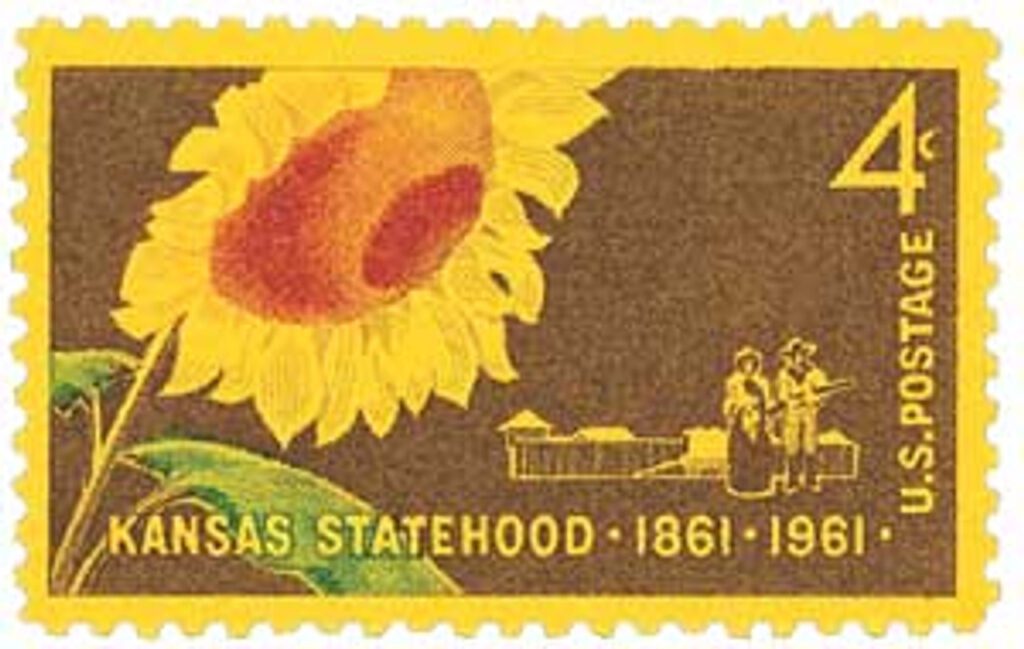
On January 29, 1861, Kansas was admitted to the Union as America was on the brink of Civil War.
Four main tribes lived in eastern Kansas before European settlers arrived – the Kansa, Osage, Pawnee, and Wichita. These tribes hunted buffalo and planted corn, beans, and squash. After acquiring horses in the early 1600s, the Arapaho, Cheyenne, Comanche, Kiowa, and other tribes moved into the central plains to hunt buffalo.
Spanish explorer Francisco Vásquez de Coronado led the first Europeans into the area in 1541. Coronado’s expedition was looking for a land called Quivira, where an Native American guide told him he would find gold. No gold was found, and the Spanish left without creating a settlement. By the early 1600s, France had claimed much of North America, including Kansas. During the early 1700s, French fur trappers began to settle in what is now the northeastern corner of Kansas.
In 1803, France sold the vast Louisiana Territory to the United States, including most of Kansas. The southwestern corner of present-day Kansas was claimed by Spain. This land would later become part of Mexico, and then Texas, before being made part of Kansas.
Kansas was governed as part of the District of Louisiana, the Louisiana Territory, and the Missouri Territory. Many Native Americans from the East were resettled in Kansas for a time. These natives included the Chippewa, Delaware, Fox, Iowa, Kickapoo, Ottawa, Potawatomi, Sauk, Shawnee, and Wyandot, and those who already lived in the area. But soon, Americans began to settle the area. Some came as missionaries, while others decided to stay while traveling the Santa Fe Trail. In 1827, Colonel Henry Leavenworth opened the first US outpost, Fort Leavenworth. By 1850, there was a great deal of pressure to open Kansas for white settlement. The federal government forced the Native Americans to cede most of their land. In 1854, Kansas was declared open for settlement. The natives were sent to reservations in Oklahoma, but some decided to stay and fight. However, none of these groups were successful for long.
During the 1850s, Kansas became the center of the America’s fight over slavery, an issue which had divided the nation. In Congress, slavery created a deep rift between the North and South. This was particularly true over the fate of new US territories – there was a great struggle to see whether the practice of slavery would be allowed in the new territories or not. Congress sought to avoid the issue with the Kansas-Nebraska Act, which essentially let the people who settled these territories decide whether slavery would be legal or not.
Kansas became a US territory on May 30, 1854. US President Franklin Pierce appointed Andrew H. Reeder the territorial governor. Soon, settlers from the North and South were pouring into Kansas. Groups looking to influence the decision over slavery aided these people in an attempt to gain a majority. The election of 1855 was marred by widespread voter fraud, intimidation, and violence. Many residents from the slave state of Missouri crossed the border into Kansas and voted. Pro-slavery candidates did well in the election. Soon after, violence broke out in Kansas, particularly near the border with Missouri. The fighting became so intense that newspapers began to call the territory “Bleeding Kansas.” Pro-slavery officials wrote a constitution favoring slavery, but Congress refused to admit Kansas to the Union as a slave state. Finally, politicians opposed to slavery were able to gain control of the legislature.

Kansas achieved statehood on January 29, 1861. At that time, several Southern states had already seceded from the Union. Within a few weeks, the Civil War erupted. Kansas was soon hit with a new wave of violence. Confederate raiders burned most of the town of Lawrence, Kansas, and massacred around 150 people. During the war, Kansas sent more men to the Union, in proportion to its total population, than any other state. When the war ended in 1865, thousands of Union veterans and newly freed slaves moved to Kansas.
Railroads were completed from the East to Kansas during the 1860s and ’70s. These railroads brought settlers to Kansas and transported farm goods to the populated areas in the East. Cattle farmers from Texas and other areas began transporting their cattle to Kansas railroad towns. This created the growth of such famous cattle towns as Dodge City, Ellsworth, Newton, and Wichita. These towns and their cowboys have become a part of America’s folklore and featured in countless books and movies. By the mid-1880s, the cattle drives died down. The railroads reached Texas, and farmers had fenced in the land with barbed wire.
In the 1870s, Mennonites from Russia introduced a new type of wheat which flourished in Kansas. Farmers in much of the state began planting this wheat, producing a bountiful harvest. Flour mills were built to process the wheat into flour. Kansas became known as the Breadbasket of America.
Mining became an important economic activity in Kansas during the early 1900s. Large deposits of coal, lead, and zinc were discovered in the southeast. Oil was discovered in Kansas in 1895, but the industry didn’t develop until after the turn of the century. The discovery that helium could easily by removed from natural gas increased the profitability of mining in Kansas.
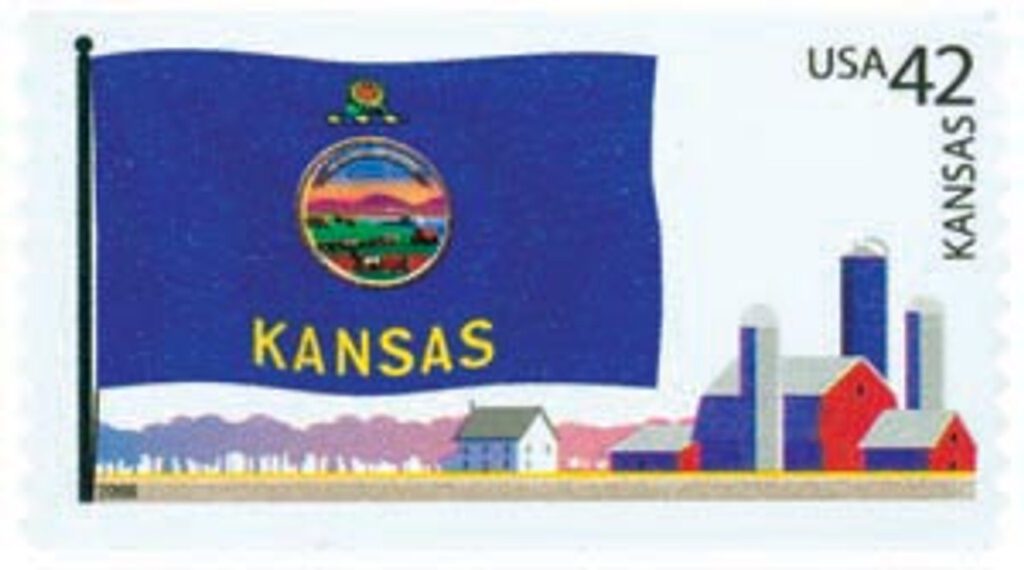
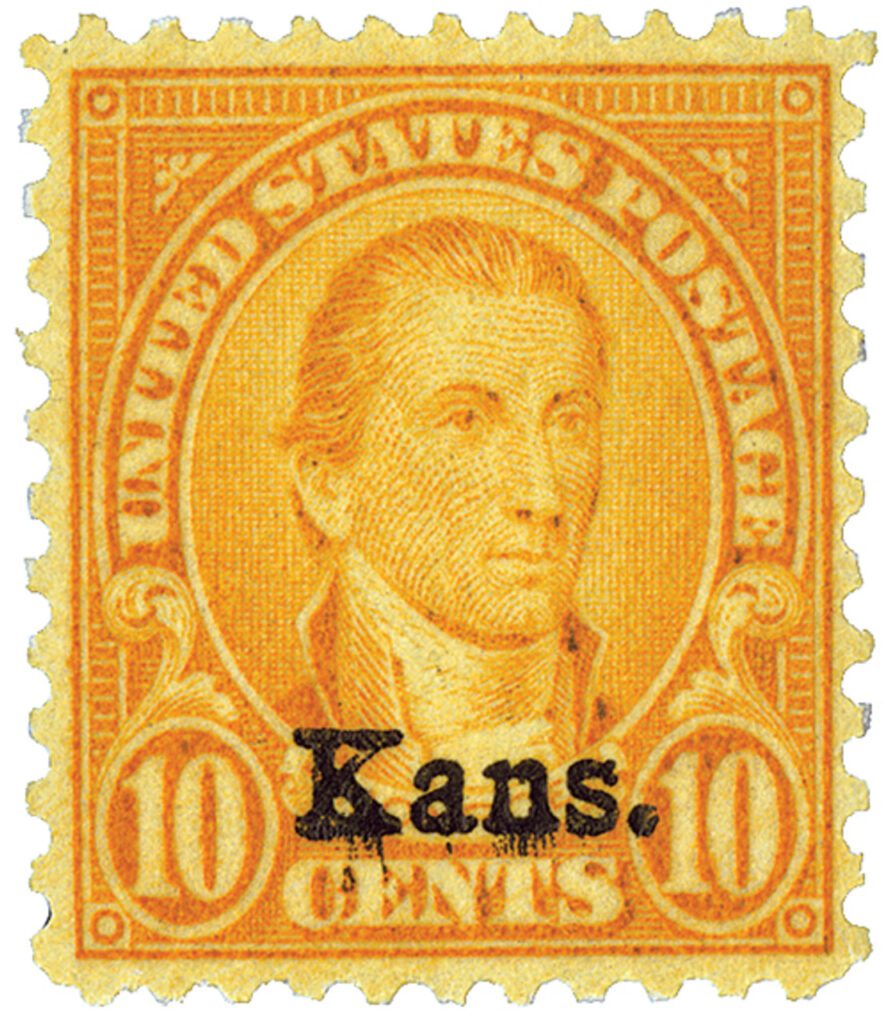
The Great Depression struck a terrible blow in Kansas. Banks shut down and factories closed. The state suffered from a severe drought and the precious topsoil needed for farming blew away in great clouds of dust. The clouds of dust were so large, people could not eat or drink without feeling grit between their teeth. This area of the Great Plains became known as the Dust Bowl.
Soil conservation techniques helped farmers prevent the soil from being blown away. World War II (1939-45) did a great deal to stimulate the economy – especially the aviation industry. During the 1950s, a drought nearly as severe as that in the 1930s struck Kansas. Irrigation helped to alleviate the problem during the 1960s. Today, Kansas remains the leading producer of wheat and has a large total agricultural output.
| FREE printable This Day in History album pages Download a PDF of today’s article. Get a binder or other supplies to create your This Day in History album. |
Discover what else happened on This Day in History.

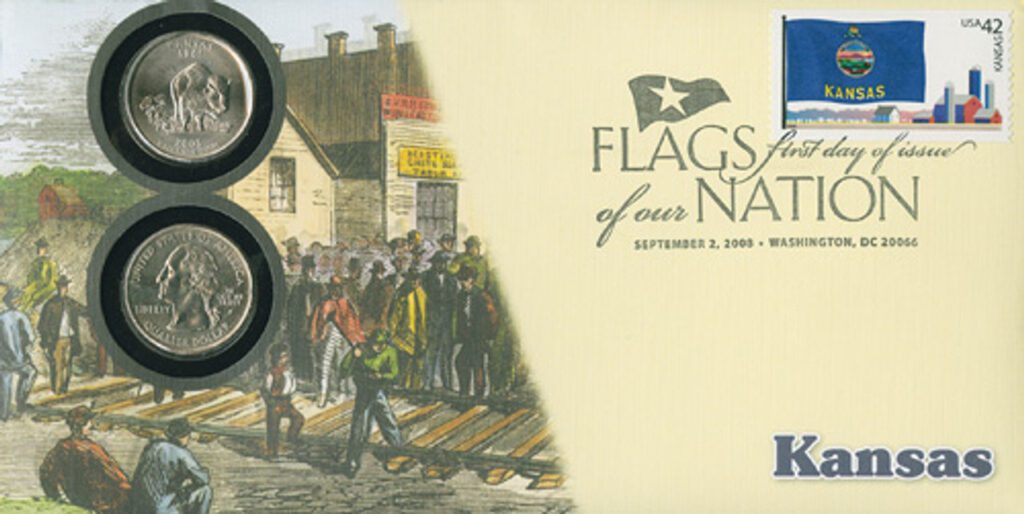
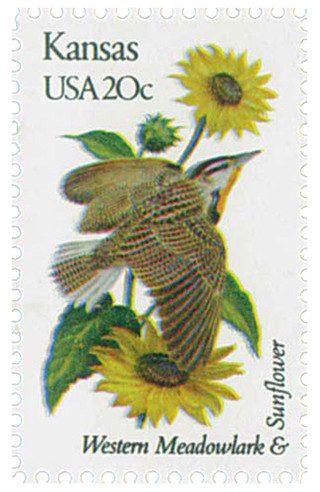
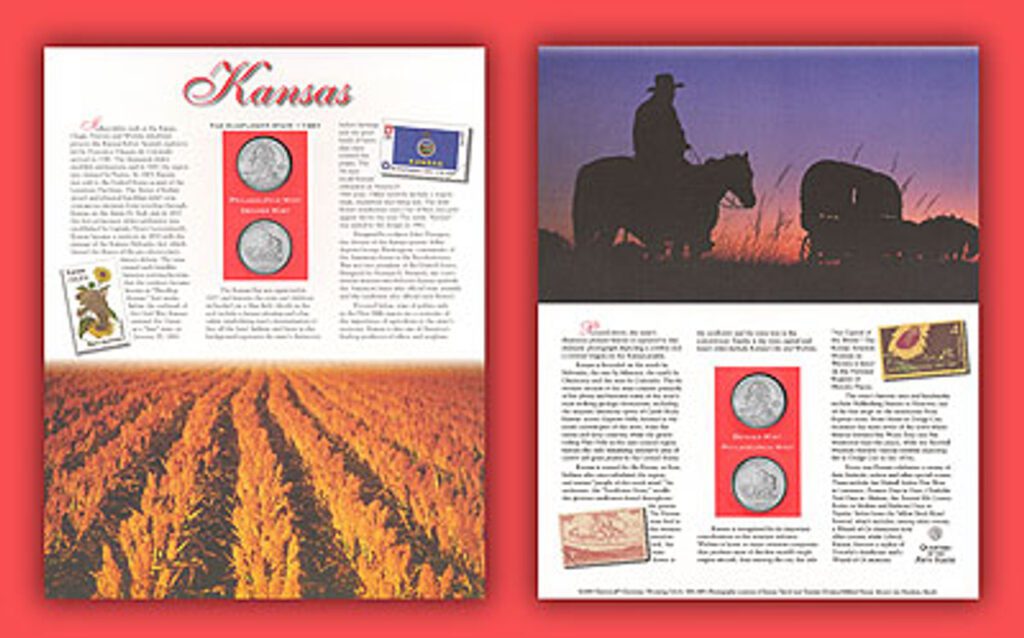
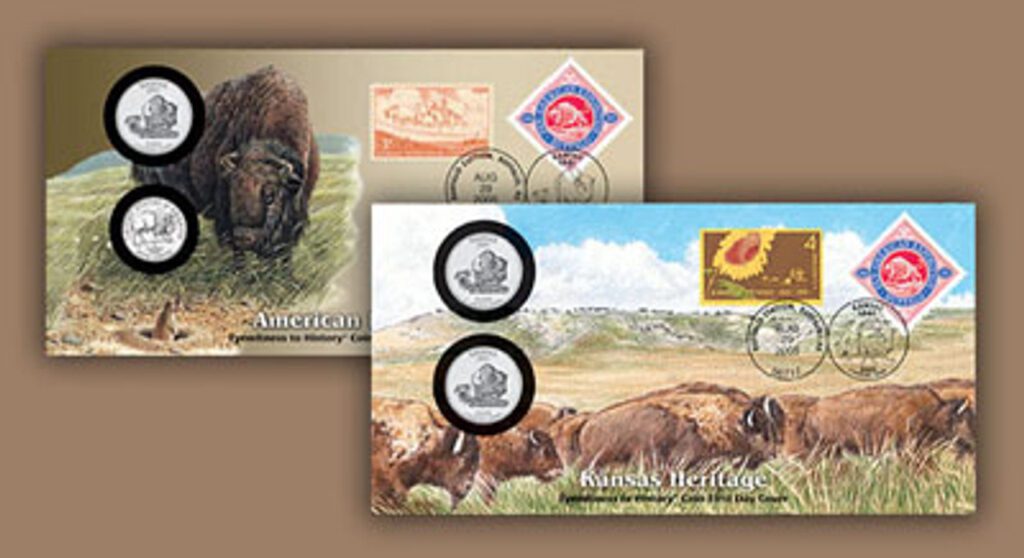

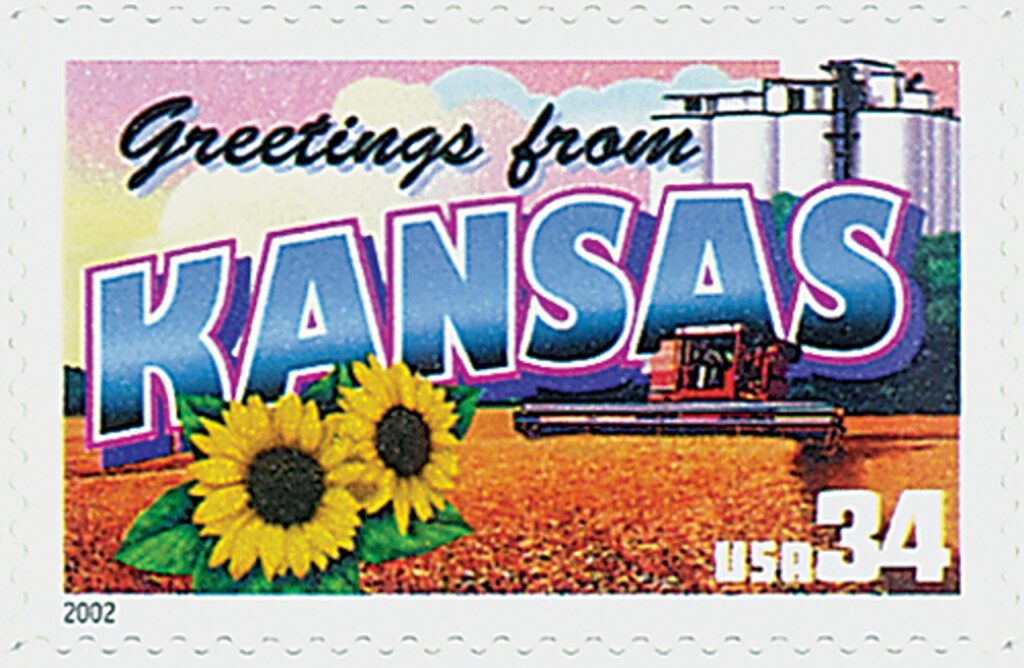
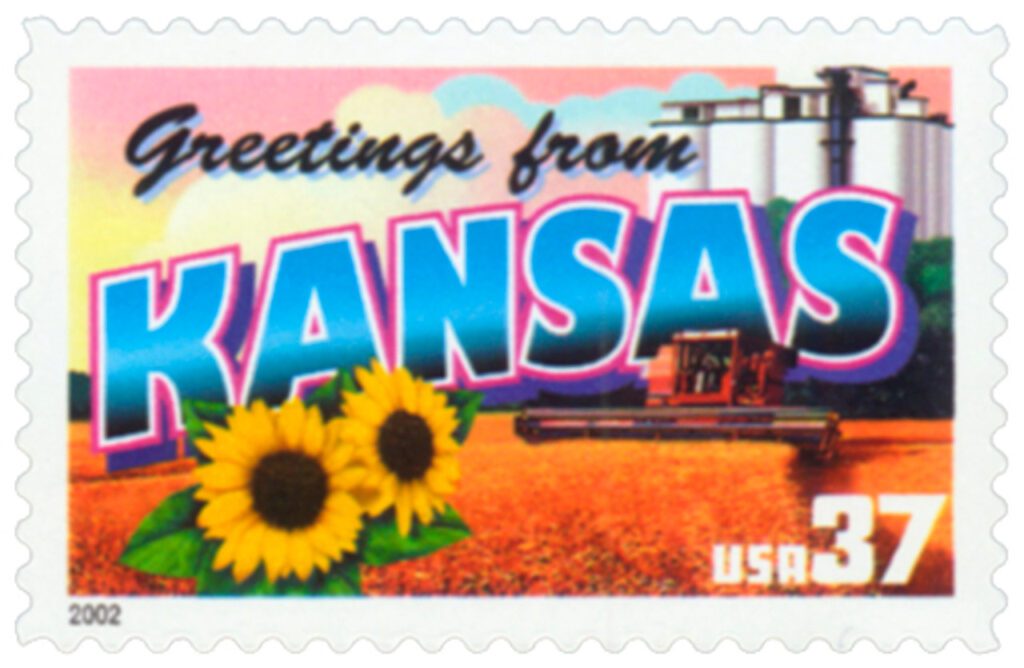
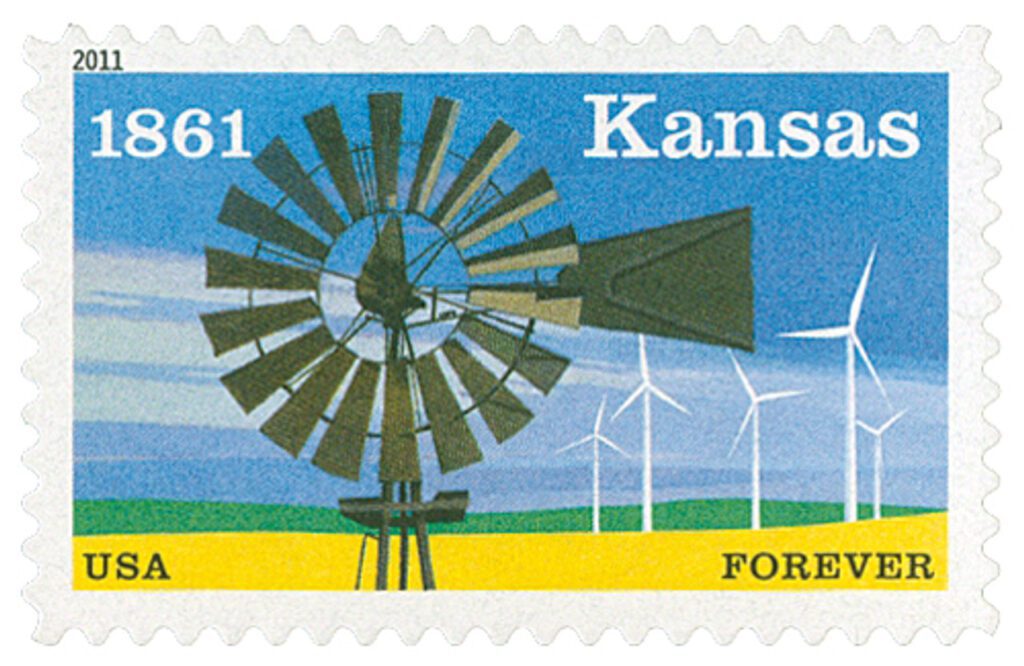
I was disappointed that you failed to tell us why the overprints (kans and nebr) were necessitated.
Hi Michael,
We attempted to address that story with link and caption for U.S. #668 stamp in the article. It’s a great story. And the stamps are really neat.
Happy Collecting!
The story about the overprints is very interesting. Thanks for posting it in the stamp link.
Since this is history of the event, not the stamp, I suppose that it the reason for the overprint not being mentioned but you can find the explanation in the catalog. It was simply to prevent theft which was rampant in MO. and KA. When the experiment failed so did the overprints.
Did you see the caption for the “Kans.” overprinted stamp?
I find it humorous that the majority of the comments “regret”that nothing was provided regarding the story behind the overprints! As philatelists we are typical stereotyped as detail people who see the less obvious—yet many readers missed the explanation of the overprints or failed to click on the link. Details….details.
I’ve opened “This Day In History” every morning since the first article was offered on July 1, 2015.
I looking forward to the March 11 stamp as that day is my 78th birthday. Thank you for doing this for those of us who love collecting stamps and love reading the rich history of our country as reflected in U.S. Postage Stamps.
Happy Anniversary Kansas!
Been all across Kansas and it has a beauty that is in the wide expanses of farm land. Thanks for the history of this fine state of nice people.
Kansas is one of the most productive agricultural states producing wheat, corn, sorghum and soybeans.With its about 29 million people the 34th most populous of the 50 United States.
29 million people?
Ok, I see the point now.
Very nicely written summary of KS state history! Thank you.